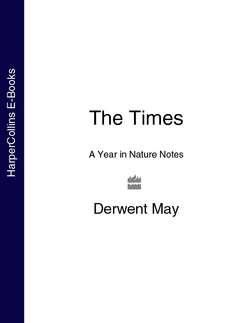Читать книгу The Times A Year in Nature Notes - Derwent May - Страница 60
23rd February
ОглавлениеTHE LESSER SPOTTED woodpecker (after which so many other ‘lesser spotted’ things are named in jest), is much less common than the great spotted woodpecker, and much more elusive. It haunts the top branches of trees and is not much bigger than a great tit. But if seen, it is easily distinguished, not only by its size but also by the fact that it has narrow black and white bars all down its back, not the big black and white patches that give the great spotted its other name of ‘pied woodpecker’.
Lesser spotted woodpeckers are most easily found in late February and March. They draw attention to themselves by drumming on dead boughs like the larger bird, though the sound is not very different. But they also have a distinctive spring call, a slow, weak ‘pee-pee-pee’ – rather similar to one of the nuthatch’s spring calls, but not so vigorous.
Bramblings have invaded the Lake District to feed on the abundant harvest of beechmast there this year. They are like chaffinches, but with an orange rather than a pink breast, and a dark head rather than a blue cap. They also reveal a noticeable white rump when they fly. They come south from Scandinavia in the winter, and go wherever they can find beechmast. I have heard that in Cumbria just now ‘every beech tree seems to have its flock of bramblings’.
